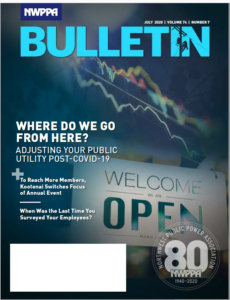“How well do you know your customer?” It’s a question that a business owner, entrepreneur, marketer, or salesperson should be able to answer. But all too often that question is more complicated. Businesses have a perception of their customer, but often it’s an incomplete one. When you evaluate people in the aggregate with market reports and big data, it can give you the illusion that you know your customer. But all the quantitative data in the world can’t replace talking to customers. Real insights require real research.
This is where insights come in. The word “insight” is an abstract noun. It’s defined as “the capacity to gain an accurate and deep intuitive understanding of a person or thing.” But when we talk about insights in the plural it has an enhanced meaning. Insights are the translation of an accurate and deep understanding of a person or thing into something actionable.
Insights don’t come easy. It takes considerable effort to gain a deep understanding of your customers’ current and future needs. And that effort comes through in-depth interactions in multiple ways. But the rewards can make a huge difference for your company’s success. Here are a few reasons why you need real insights and the type of research it takes to get it.
Real research starts with your customer
Customer insights should have a huge bearing on what you do as a company. But sometimes we forget the part they play. Talking with customers to understand their changing needs is imperative to stay relevant. Research that targets customers can give you a window into their thinking and behaviors. And it can give you a leg up on the competition.
Focus groups and ideation with customers can have a huge impact. They can tell you the “why” behind purchase choices. They can help you understand individual behaviors and what consumers think culturally. In-depth ethnographic research can uncover unmet and unarticulated needs. This can be influential in new product or service development. It can also guide you in identifying new answers to customers’ problems.
But research goes beyond your customer…
Customers are critical in determining things like how to market and stay relevant. They can also help with new product development and innovation. But they shouldn’t be the only research input. People outside your customer base are often aware of things that are oblivious to your customer. When you get outside perspectives you can reveal blind spots and opportunities that may be otherwise unidentified.
In-depth interviews with people on the outside of your industry yield periphery insights. Periphery insights come from people in adjacent or complementary industries and outside observers. It includes policymakers, influencers, and those with a view beyond the customer. Speaking with these individuals about what they see for the future can yield poignant data. And when combined with customer insights, periphery insights can stimulate innovation and strategy.
Trends create a picture of the future
Customers and those on the periphery are often concerned about the present. Trends help to develop future insights to determine how things may change and disrupt you. In-depth trends research helps to understand potential scenarios. As you understand how scenarios can affect you for good or ill, you can plan for them.
Trends research requires looking at a macro-view of the world. It involves political, economic, cultural, technological, and social lenses. By using these lenses, you can make sense of a changing world. Trends research involves in-depth interviews with various subject matter experts. These include technologists, futurists, social activists, economists, and other authorities on the changing world. This research helps to drive a vision and strategy that is adaptable because it is grounded in future insights.
Real research matters
Insights can be the difference between the success and failure of your product, service, or business. If you don’t have an understanding of your customer, the world around you, and what the future holds, it will be difficult to survive. By getting customer insights, periphery insights, and future insights, you’ll be better prepared for the challenges you face.


